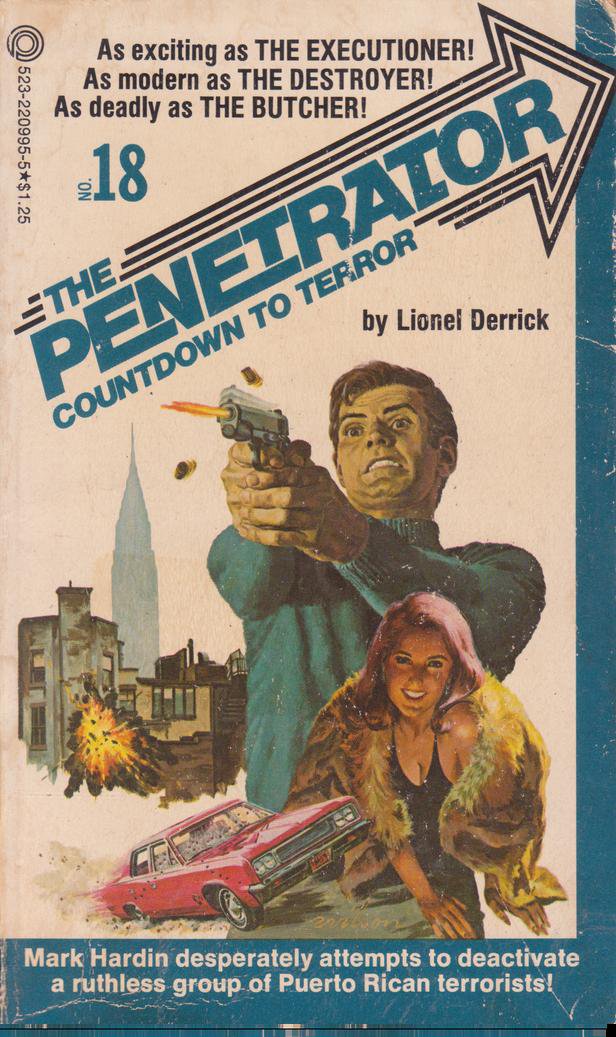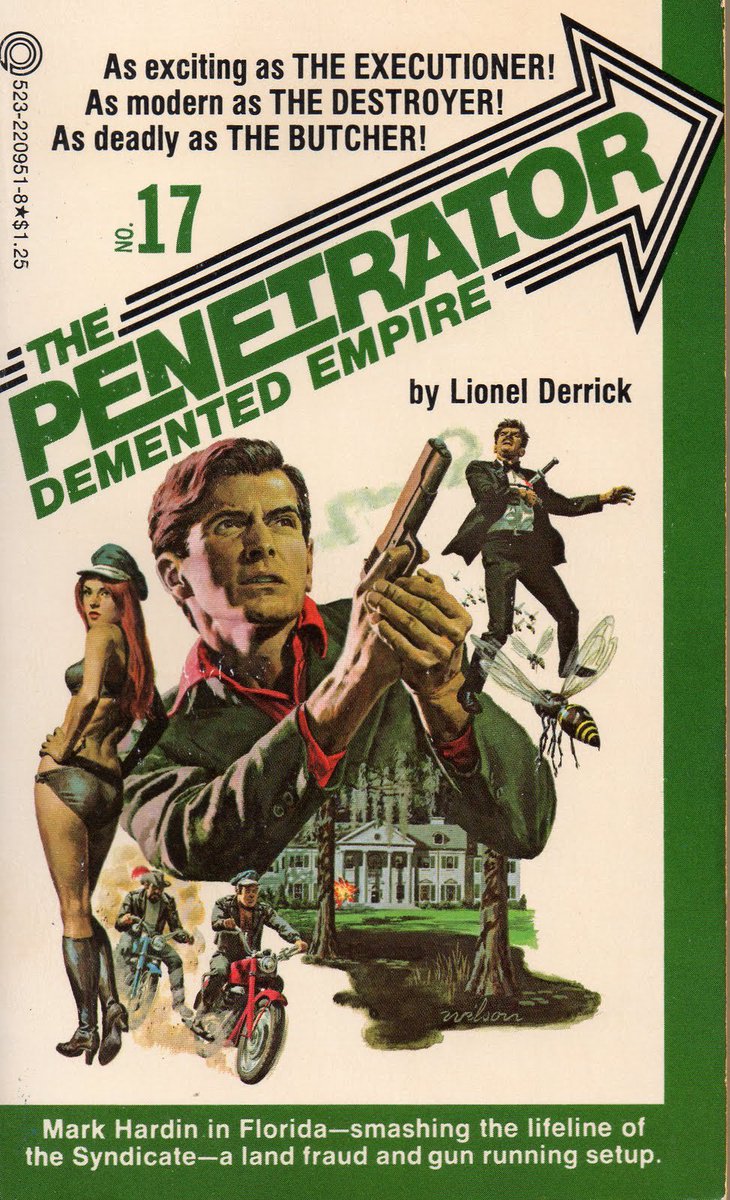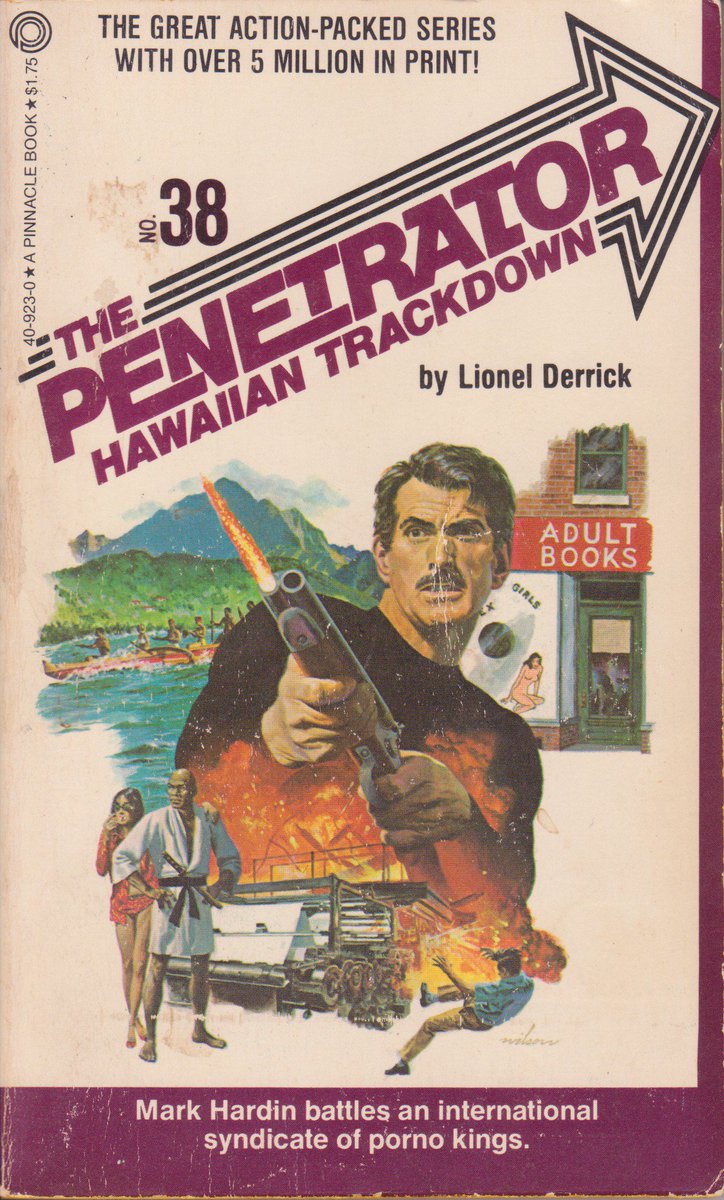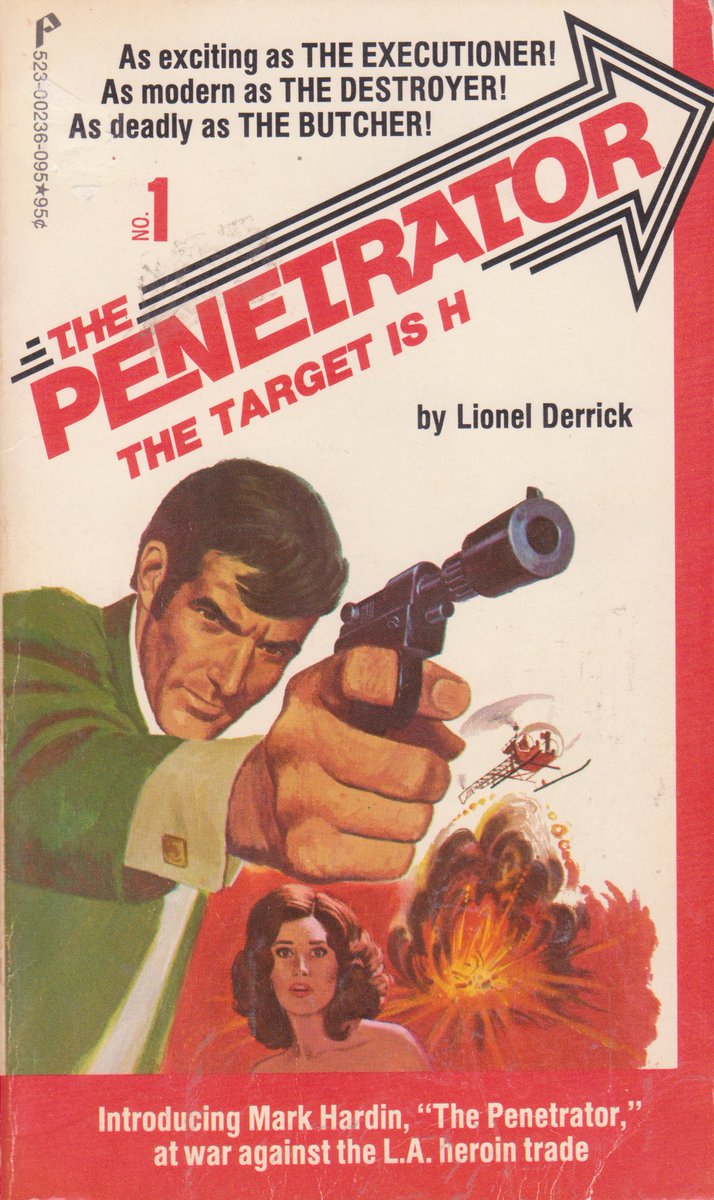Mark Hardin is a one-man strike force against corruption. Orphaned at the age of four he was brought up mean and hungry. He learned his fighting skills in Vietnam before returning to an America gone bad. 



Actually The Penetrator is one of a long list of vigilante pulp heroes thrown up in the 1970s counter-counterculture backlash, along with The Destroyer, The Executioner The Iceman and The Marksman to name but a few. 







Lionel Derrick was a Pinnacle house alias used by two pulp writers: Mark Roberts and Chet Cunningham. Overall they produced 52 Penetrator novels, with Roberts writing the odd-numbered books and Cunningham the evens. 



Unlike other pulp vigilantes who only battle the Mafia, Mark Hardin fights anyone looking to destroy the American way of life: crooks, terrorists, pornographers, hippies, scientists... 







But wherever he goes Mark Hardin knows how to blend in: his skills in covert operations and infiltration led to his uniquely memorable name - The Penetrator! 



Are these books any good? Well there's plenty of bloody action and Hardin is always getting injured and having to fight against immense pain. Plus he has a moustache (sometimes). And a side parting. So he has lots to deal with. 



If you like your books low on sex but high on blunt trauma, concussion and acid baths then The Penetrator is probably right up your alley. Omnibus editions ("Double Penetrator!") are also available. 



But be warned: later Penetrator novels do get kinda weird: French-Canadian dwarf cults, mad Nicaraguan super-ants, mollusc assassins, remote controlled supervolcanoes etc. 



The novels are easy to collect: prices are low and many editions are in reasonable condition, as they were only read once.
That's it for my look back at Mark Hardin and his one man war against weird villainy. More pulp heroes another time...

That's it for my look back at Mark Hardin and his one man war against weird villainy. More pulp heroes another time...


• • •
Missing some Tweet in this thread? You can try to
force a refresh

























